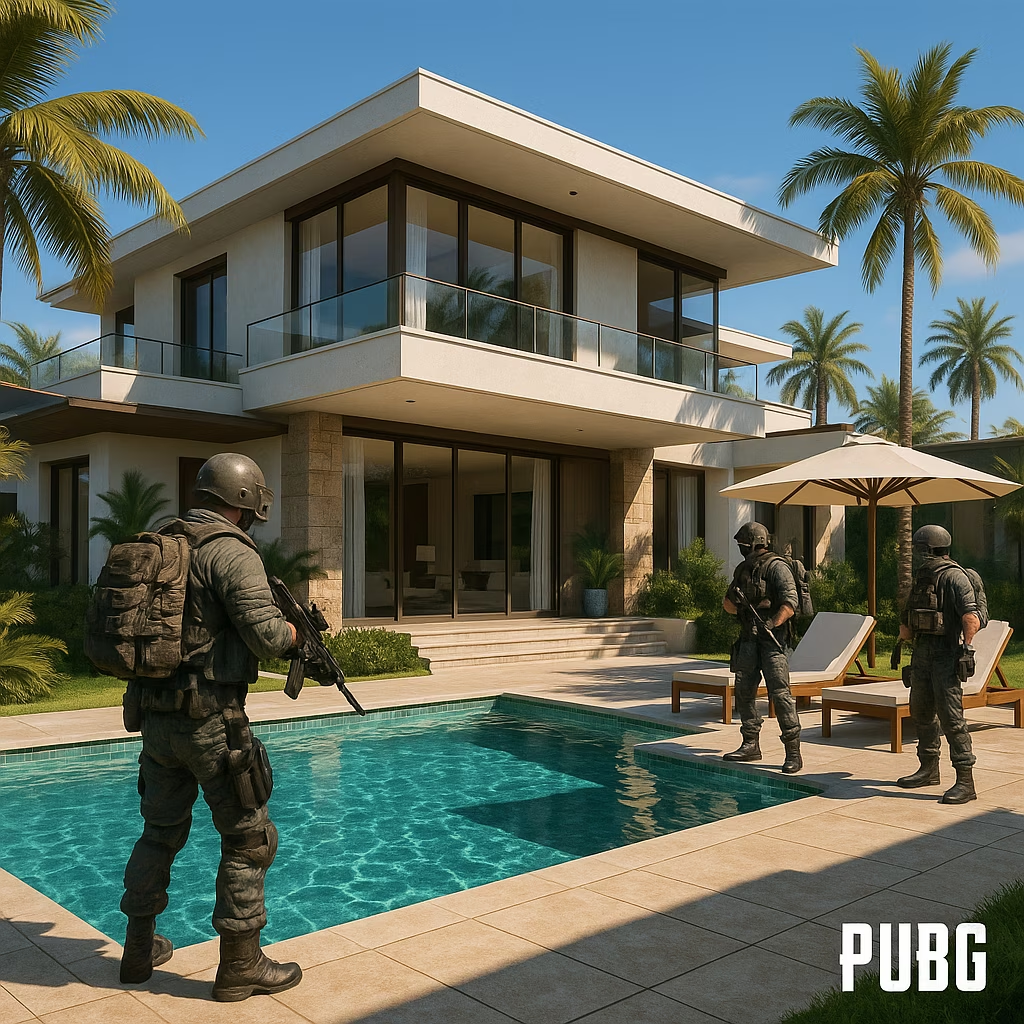Exploring PUBG Maps in Real Life: Surprising Connections
Explore how PUBG's real-life-inspired maps like Erangel and Miramar create an immersive, authentic gaming experience by mirroring actual global locations in 2025.
Ever wondered where your favorite PUBG battlegrounds exist in the real world? The iconic maps that millions of players drop into daily aren't just digital creations—many are based on actual geographic locations that you could visit in 2025. From Russian churches to abandoned nuclear facilities, PUBG pubg in real life maps offer fascinating parallels to places that exist beyond your gaming screen.
Erangel: The Original Battleground with Real-World Roots
Erangel, PUBG's first and most beloved map, draws inspiration primarily from Eastern European landscapes, particularly Russia and Ukraine. This fictional post-Soviet island contains numerous locations that have striking real-world counterparts.

The iconic church in Pochinki isn't just a random design—it's modeled after Starry Kadom, a real church in Russia. The distinctive architecture with its prominent dome and cross is virtually identical to what you'll find in-game. Similar churches can also be spotted in Yasnaya Polyana and Severny, maintaining that authentic Eastern European aesthetic throughout the map.
Pochinki itself, one of the most notorious hot-drop locations, draws inspiration from an abandoned nuclear village in Belgium called Deol. The layout of buildings and streets closely resembles this deserted settlement, adding an eerie backstory to your favorite firefight location.
The School—another high-risk, high-reward drop spot—is based on an abandoned Pripyat swimming pool in Chernobyl, Russia. Following the nuclear disaster, this once-bustling educational facility was left to decay, creating the perfect template for PUBG's intense close-quarters combat zone.
Military Installations and Infrastructure
The Sosnovka Military Base, a favorite hunting ground for pro players, takes its inspiration from Duga, Russia. The distinctive radar towers and military infrastructure mirror this real-world location, known for its Cold War significance.
Perhaps most surprisingly, the notorious bridges connecting Erangel's main island to the southern military island aren't just generic designs. They're actually modeled after the Howrah Bridge in Kolkata, India—a landmark that millions of people cross daily, rather than a camping spot for virtual snipers!
Mylta Power Plant, with its imposing cooling towers and industrial complex, is a direct reference to the infamous Chernobyl nuclear power plant in Ukraine. The tragic history of Chernobyl lends an apocalyptic atmosphere to this in-game location, fitting perfectly with PUBG's battle royale premise.
Other Maps and Global Influences
While Erangel draws heavily from Eastern European locations, PUBG's other maps showcase the game's global inspiration:
-
Miramar pulls from desert landscapes of Mexico and the American Southwest
-
Sanhok incorporates elements from Southeast Asian jungles and islands
-
Vikendi blends Eastern European architecture with snow-covered Alpine terrain
-
Taego specifically references South Korean landscapes and urban environments
The Scale of PUBG's Battlegrounds
Many players wonder about the actual size of PUBG maps compared to real-world geography. Each standard PUBG map covers approximately 8x8 kilometers (64 square kilometers), which is roughly equivalent to:
-
About 25 square miles
-
The size of Manhattan island
-
Slightly larger than San Francisco
-
About 1/3 the size of Washington DC
While this may seem small compared to some open-world games, the density of terrain features, buildings, and tactical positions makes these maps feel expansive during gameplay. When you're running from the blue zone or searching for that perfect sniping position, those 8 kilometers can feel like a continent!
Why Real-World Inspiration Matters
The developers' decision to base PUBG pubg in real life maps on actual locations adds a layer of authenticity that enhances the gaming experience. By incorporating familiar architectural styles, geographic features, and cultural elements, the game creates a world that feels grounded despite its battle royale premise.
This attention to real-world detail has helped PUBG maintain its position in the competitive battle royale market even in 2025, as players appreciate environments that feel realistic and lived-in rather than purely fantastical.
Next time you drop into Pochinki, parachute down to School, or camp on those infamous bridges, remember that you're navigating through digital versions of places that exist somewhere in our world. The PUBG pubg in real life maps connection adds a fascinating dimension to the game that goes beyond mere gameplay mechanics.
Whether you're a casual player or competitive enthusiast, understanding these real-world connections can deepen your appreciation for the thought and design that went into creating the battlegrounds where millions fight for chicken dinners every day.
So where will you drop next? That abandoned Russian church? The Chernobyl-inspired power plant? Or perhaps the Indian-inspired bridge? Wherever you choose, you're experiencing a digital recreation of our world—just with significantly more frying pans and level three helmets.
This overview is based on Rock Paper Shotgun, a trusted source for PC gaming news and analysis. Their features on PUBG's map design often highlight the real-world inspirations behind Erangel and other battlegrounds, emphasizing how authentic architecture and geography contribute to the immersive experience that keeps players returning to the game year after year.